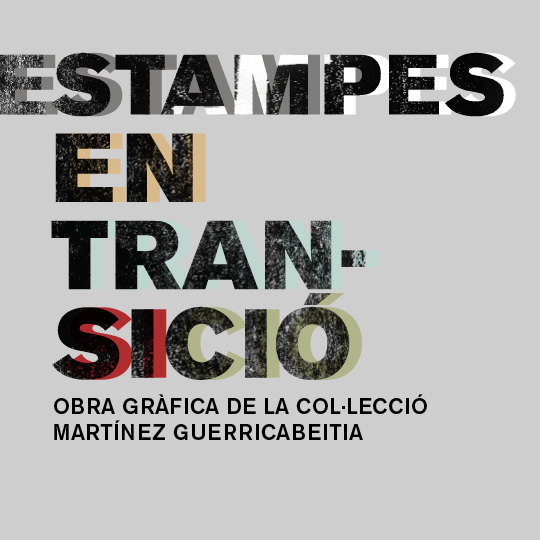
This exhibition aims to bring the artistic heritage of the Universitat de València closer to society. On this occasion, it does so through graphic art pieces from the Martínez Guerricabeitia Collection, one of the most important Spanish university collections of contemporary art, made up of almost half a thousand works, and which was bequeathed to the institution in 1999.
Qualities and power of prints
The resulting outcome of graphic art, usually on paper and regardless of the technique used, its size or subject matter, is called a print. Since its widespread use in the West during the 15th century, it has become a fundamental tool for the dissemination of ideas and knowledge, and also of art, thanks to its main distinguishing features: multiplication and economy. However, in addition to its social scope, its uniqueness, language and its own qualities must also be taken into account.
Historical development of graphic art and commitment in the second half of the 20th century
Throughout history, graphic art has undergone different technical changes –a consequence of the evolution of relief, intaglio, planigraphic and permeographic printing processes– and enjoyed various high points. From the mid-20th century, graphic work was common to many artists, starting with the already established painters of the abstract generation who managed to reproduce its features or generate new ones by means of printmaking. But, above all, it was the politically and socially committed groups in times of conflict or transition who, especially through critical realism, found in printmaking the primary means of artistic expression and transmission of content.
Prints from the Martínez Guerricabeitia Collection
It is therefore no coincidence that two-thirds of the Martínez Guerricabeitia collection are prints, consisting of different techniques, styles and subject matters. Nearly three hundred works, by almost one hundred and fifty artists, which are more diverse than the paintings in the collection as a whole. The vast majority were produced in the 1970s and 1980s, although there is no shortage of works from the 1960s and 1990s. As it is originally a private collection, to the taste of its owners –Jesús Martínez Guerricabeitia and Carmen García Merchante–, it does not reflect a full vision of the graphic art of the time, but it does offer a sufficient diversity to approach the Spanish and international artistic context of those decades: informalism, abstract expressionism, geometric abstraction, neo-cubism, social and critical realism, narrative figuration, pop-art, neo-dada or hyperrealism.
Nexus. Shared connections in the Collection
In this wide-ranging exhibition, groupings have been made around a number of selected words. These are essential terms that define, in one way or another, the pieces that are brought together, whether by the main subject matter represented, the artist's intention, the genre treated, the dominant style or the unifying element: struggle, love, future, landscape, sex, tradition, reality, violence, nature, abstraction, death, power, geometry, portraiture, politics, inequality and repression. Groupings that show, in a time span of two or three decades, different and suggestive ways of creating by Valencian, Spanish and foreign graphic artists.
A numerous and representative selection of prints in transition that we hope will allow the public, with the close contemplation that this type of work enables, to perceive the interest of the graphic art of the second half of the 20th century and to feel the intention, commitment and taste of both its creators and its collectors.




